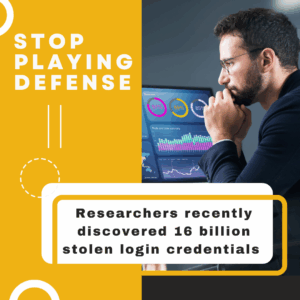The introduction of new top-level domains (TLDs) by Google Registry, including .zip and .mov, has raised concerns within the infosec community regarding cybersecurity risks. Deep learning and machine learning can be vital in preventing and mitigating these risks. Additionally, users must understand these dangers and take the necessary steps to protect themselves.
The .zip TLD has raised worries due to its association with file extensions commonly used for compressed files. This association allows malicious actors to deceive users into visiting malicious websites or infecting their systems with malware through phishing emails or deceptive URLs. In addition, the automatic conversion of file names with .zip into clickable URLs intensifies the risk, as unsuspecting users may unknowingly click on these links.
Protect Yourself
If you are not a BLOKWORX partner; users and organizations should consider the following steps:
- Stay vigilant. Users must exercise caution when interacting with .zip domains or clicking links with .zip extensions. Verifying the source and legitimacy of any URLs or attachments before accessing or downloading them is crucial.
- Enable robust security measures. Ensure your devices and systems have installed up-to-date antivirus software, firewalls, and anti-malware tools. Regularly updating these security measures is essential to protect against evolving threats.
- Educate users. Organizations should provide comprehensive cybersecurity awareness training to employees, emphasizing the risks associated with new TLDs and file extensions. This education can help users recognize potential threats and adopt safe browsing practices.
- Implement domain blocking. Consider blocking access to suspicious TLDs, including .zip and .mov, through network policies, firewalls, or email filters. This helps mitigate the risk of users inadvertently accessing malicious domains.
- Leverage deep learning and machine learning. Deep learning and machine learning algorithms can assist in detecting and preventing threats associated with new TLDs. These technologies can identify and block potentially harmful websites or emails in real time by analyzing patterns, behaviors, and characteristics of malicious domains.
In conclusion, while introducing new TLDs like .zip and .mov presents potential cybersecurity risks, users can protect themselves by remaining vigilant, implementing security measures, educating themselves and others, and considering domain blocking. Additionally, applying deep learning and machine learning can enhance threat detection and prevention capabilities, enabling proactive defense against evolving cyber threats. By combining user awareness and advanced technologies, we can create a safer digital environment and mitigate the dangers posed by these new TLDs.



